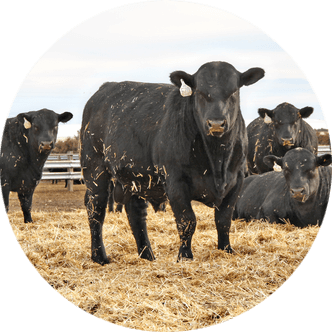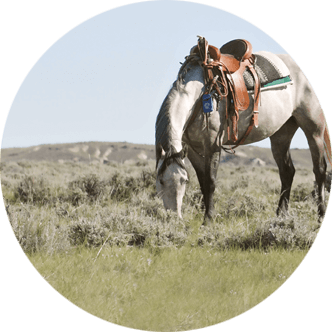Common ground found on contentious topic
During the second day of the West Central States Wool Growers Convention, held Nov. 7-8 in Cody, both sides of the Bighorn and domestic sheep debate came together to discuss one of the West’s most complex range management issues.
The panel was moderated by Wyoming Wool Growers Association (WWGA) Executive Vice President Alison Crane and featured Dr. Jared Beaver, wildlife biologist and Montana State University (MSU) Extension wildlife specialist; Dr. Maggie Highland, diagnostic pathologist and head of the Wyoming State Veterinary Laboratory’s Pathology and Professional Veterinary Services Section; Wyoming Game and Fish Department (WGFD) Territorial Biologist Ryan Amundson; Wyoming Wild Sheep Foundation (WY-WSF) Executive Director Katie Cheesbrough and Shaun Sims, WWGA vice president and Wyoming sheep producer.
Panelists discussed policy, research, disease management and, arguably most importantly, how much progress has been made between opposing groups when it comes to sitting at the same table and talking openly about difficult issues.
The Wyoming Plan
Amundson kicked off the discussion by outlining the history of the Wyoming Bighorn Domestic Sheep Interaction Working Group, which was formed in 2000 after then Gov. Jim Geringer and Sen. Craig Thomas urged stakeholders to find “Wyoming-made solutions” to conflicts between wildlife and agriculture.
“The goal was to ensure a healthy Bighorn population while maintaining a viable domestic sheep industry,” he noted.
Over the course of four years, these diverse interests – including WGFD, WWGA, WY-WSF, Wyoming Stock Growers Association, Wyoming Farm Bureau Federation, National Wild Sheep Foundation, U.S. Forest Service, Bureau of Land Management, Wyoming Department of Agriculture (WDA), Wyoming Livestock Board (WLSB) and individual producers – hammered out what became known as the Wyoming Plan, which was later codified into state law in 2015.
The plan established core habitat designations, non-emphasis areas and non-management zones to help balance conservation and production. It also requires approval from three signatories – WDA, WLSB and the Wyoming Game and Fish Commission – for any changes to be implemented.
This year, the Bighorn Sheep Restoration Area designation was added, providing a framework for potential reintroduction or natural recolonization of Bighorn sheep while protecting livestock producers from liability.
Amundson said the group continues to meet annually in Lander to review updates, challenges and projects.
“Basically, management decisions are the teeth of the plan, but I think it’s really important we are required by statute to meet once a year,” he concluded.
Producer’s perspective
From a producer’s perspective, Sims underscored the real-world impacts of federal grazing decisions.
“When Bighorn sheep show up near domestic sheep allotments, it can trigger federal reassessments that put those grazing permits at risk,” he said. “Ranchers can lose their permits or have them temporarily revoked, which is probably the biggest issue.”
This is why he believes the Wyoming Plan and the state’s commitment to managing Bighorn and domestic sheep interactions responsibly is so important.
He also noted the importance of state and federal cooperation.
“The WGFD has given us plenty of assurance and worked really hard, but we have to have the federal government come to the table, recognize how good of a job individual states have been doing and let them manage Bighorn sheep,” Sims said.
He added, “The framework is there but, bottom line, the federal government is going to have to let states manage their own Bighorn populations.”
Commingling research
Next, Beaver shared findings from Montana’s Wild and Domestic Sheep Commingling Study, a collaborative effort between the Montana Wool Growers Association and Montana Wild Sheep Foundation.
More than a decade in the making, researchers hoped the project would shift from finger pointing toward a shared understanding.
“Stakeholders wanted a situation where wild and domestic sheep could both thrive on the landscape, and they knew the only way to do this was to push past their differences and start working together,” Beaver stated. “Out of this came a collaborative study that kicked off in 2022.”
Because the Montana Game and Fish Department conducts quite a bit of Bighorn sheep research though its new adaptive management plan, Beaver said there are a lot of collared animals in the area, which offered the perfect opportunity to carry out a baseline study.
MSU researchers used monitored Bighorn sheep movement to piece together when, where, how often and under what conditions wild and domestic sheep commingling events were occurring in an area spanning roughly 3,830 acres.
Beaver noted this particular area is dense in sheep operations, with nearly 200 ranches running anywhere from three to 3,000 sheep – amounting to a small average operation size of 16 sheep and five goats.
“We saw 300 close contact events, which is by far more than we were anticipating and most of those would have gone undetected if it wasn’t for this effort,” Beaver stated. “When I say close contact, it isn’t nose to nose. It means we have a GPS point within 200 meters of known domestic sheep and goats.”
He further noted these close contact events included only 32 individual Bighorn sheep including 15 collared rams and 17 collared ewes.
“By design, we’re not testing whether transmission occurs,” he said. “We want to understand the driving factors – the when, where and how.”
Beaver explained these factors include things like whether or not wild sheep are migratory, the density of domestic sheep and goats in the area and whether or not the operations were fenced and/or used livestock guardian dogs.
“The preliminary survey data was kind of surprising,” he admitted. “Among the 59 small producers surveyed, 36 percent had no prior knowledge of any wild and domestic sheep disease concerns and 56 percent had never even heard of Mycoplasma ovipneumoniae (M. ovi).”
Beaver also pointed out approximately 90 percent of these small producers admitted they are not actively involved in the ag industry.
“So, what we see as part of the management strategy moving forward is implementing conservative outreach,” he said. “We discovered, when they learn and actually understand the issue, they’re far more willing to take preventative measures and be involved in open communication and information reporting.”
Finding common ground
During her time at the microphone, Highland spoke on the scientific and emotional complexities of the debate.
Through her research and travels across the country, she’s found the M. ovi pathogen in multiple other species like white-tailed deer and cattle.
“The issue isn’t one species against another – it’s the pathogen itself,” she stated. “There needs to be a reframing that domestic sheep are not the enemy. The pathogen is the enemy, and we should all be focusing on managing it together.”
“For years we’ve treated this as domestic sheep versus wild sheep, but really its all of us against a complex, shared disease challenge,” she reiterated.
Although the Bighorn and domestic sheep debate has historically been wrought with tension, the tone of this year’s panel was notably friendly and optimistic.
Cheesbrough and Amundson highlighted recent examples of cooperation between both groups, including the submission of joint comment letters on invasive species to shared habitat restoration efforts following wildfires.
“There’s a lot more we agree on than we disagree on,” Cheesbrough said. “We all love the landscape, and we depend on it. Working lands are wildlife lands, and keeping them healthy benefits us both.”
As the discussion wrapped up, the panelists offered cautious hope.
Though there are still challenges ahead, the ability for both parties to come to the table with shared determination and effective communication is a big milestone.
“Not long ago, this conversation couldn’t have happened. Now we are sitting on the same stage – that’s progress,” Crane concluded.
Hannah Bugas is the managing editor of the Wyoming Livestock Roundup. Send comments on this article to roundup@wylr.net.





